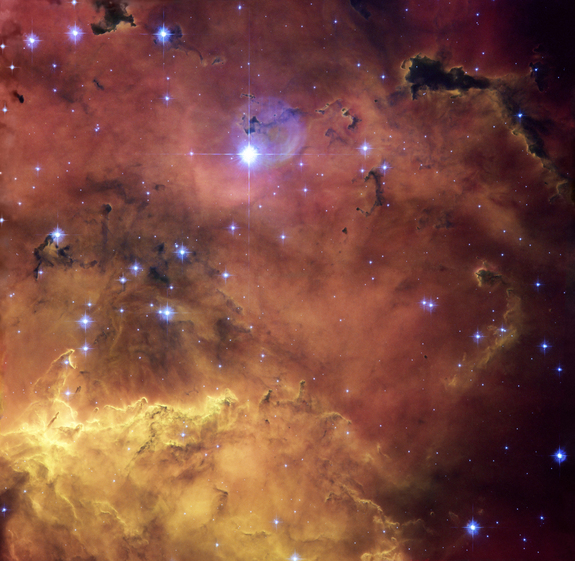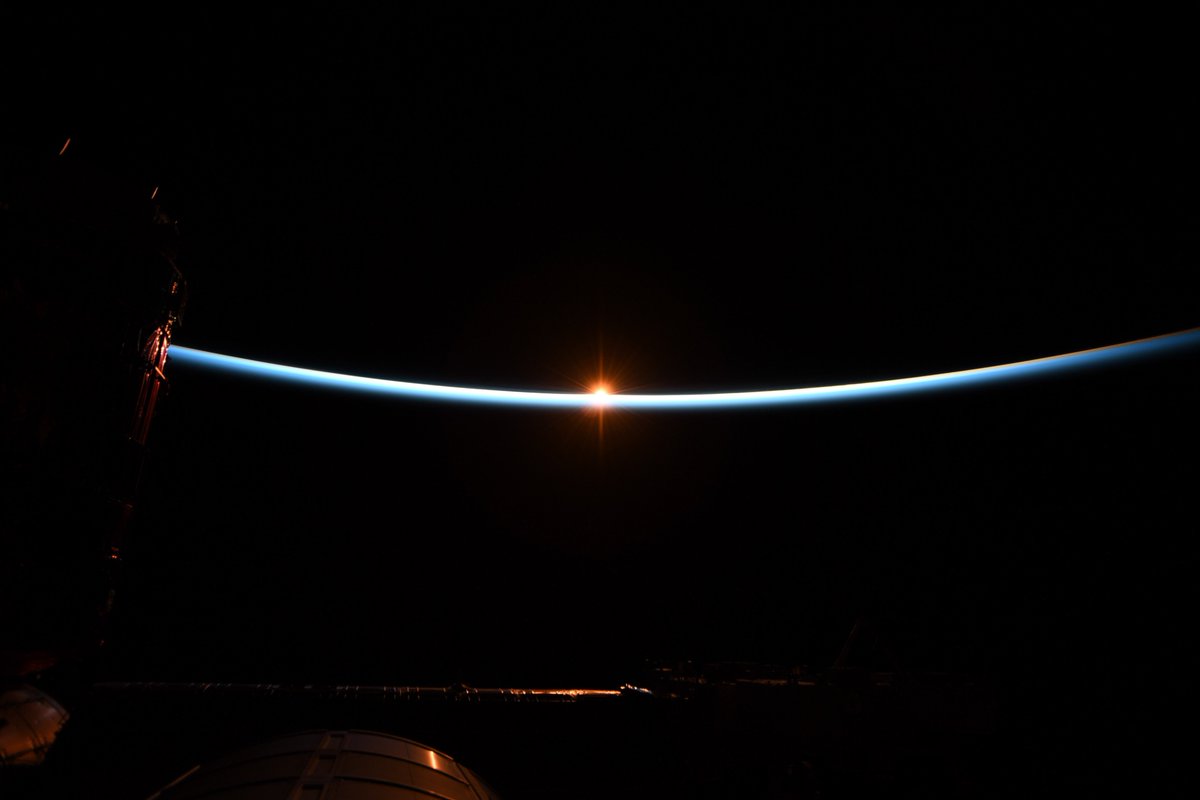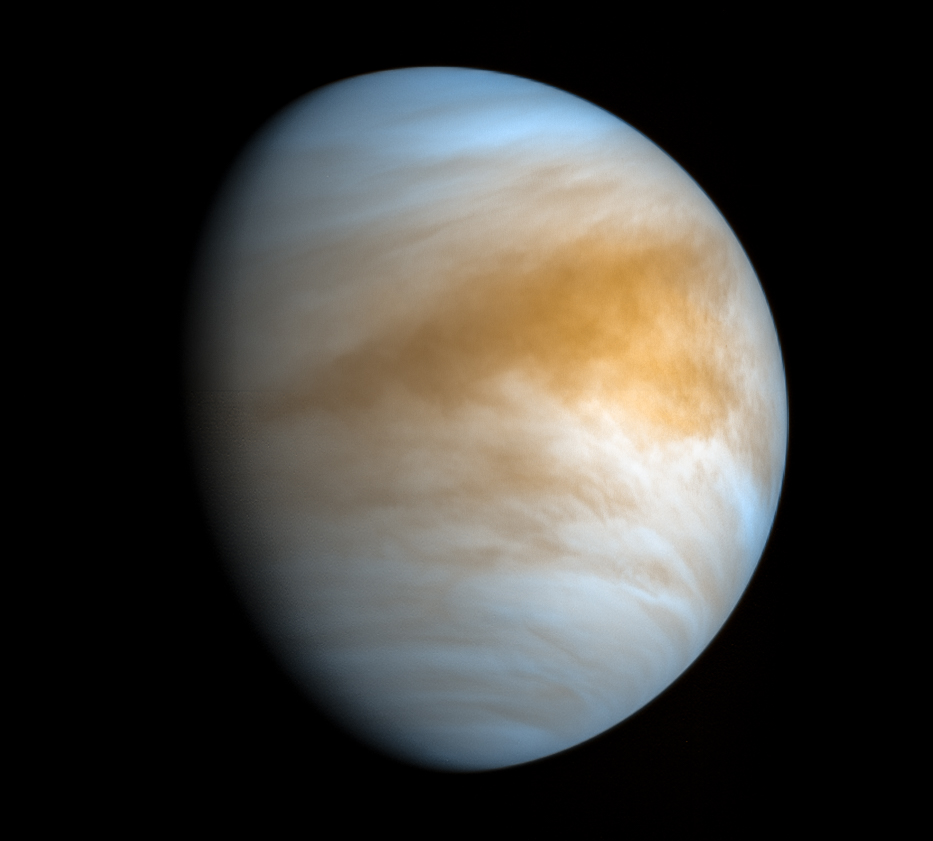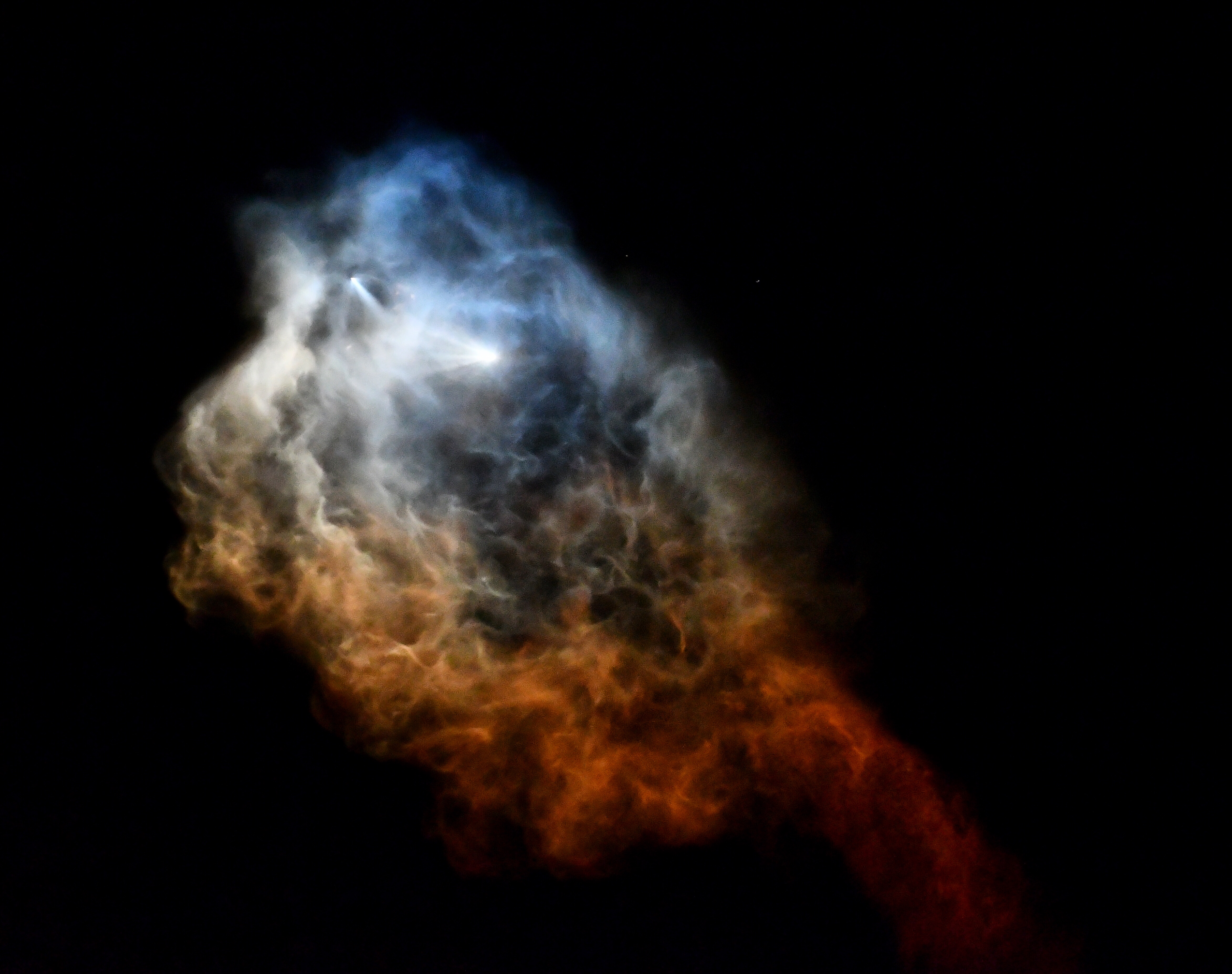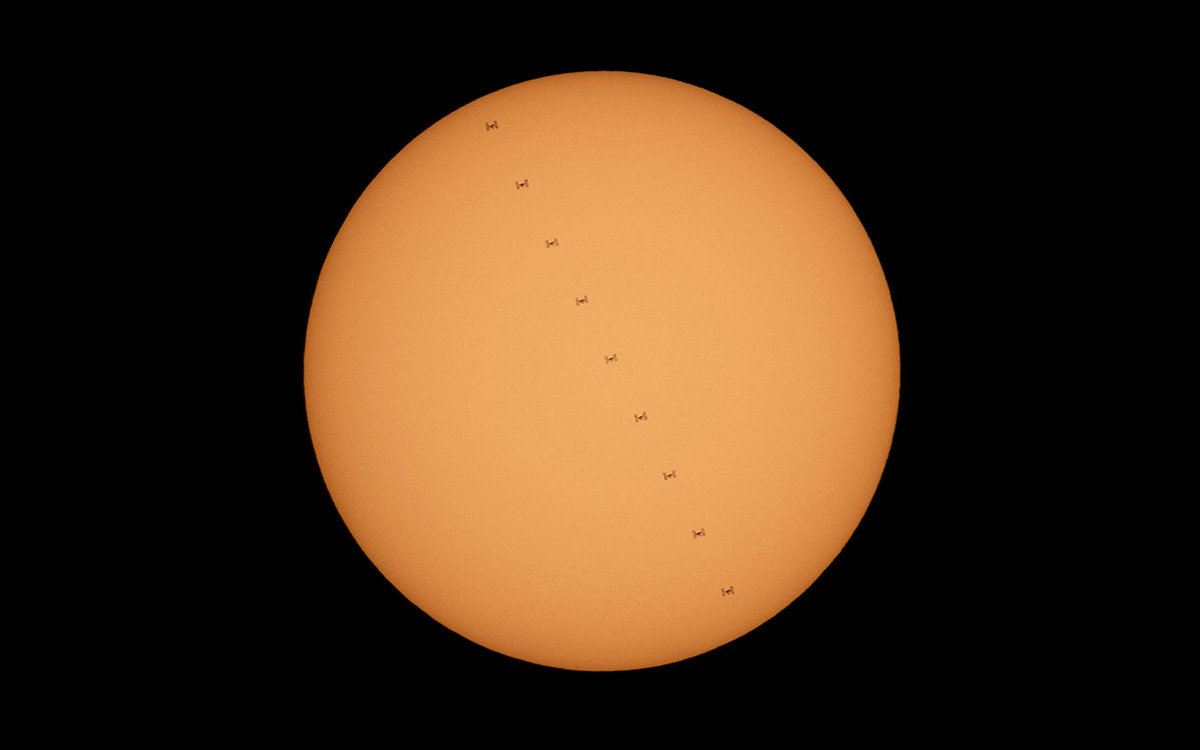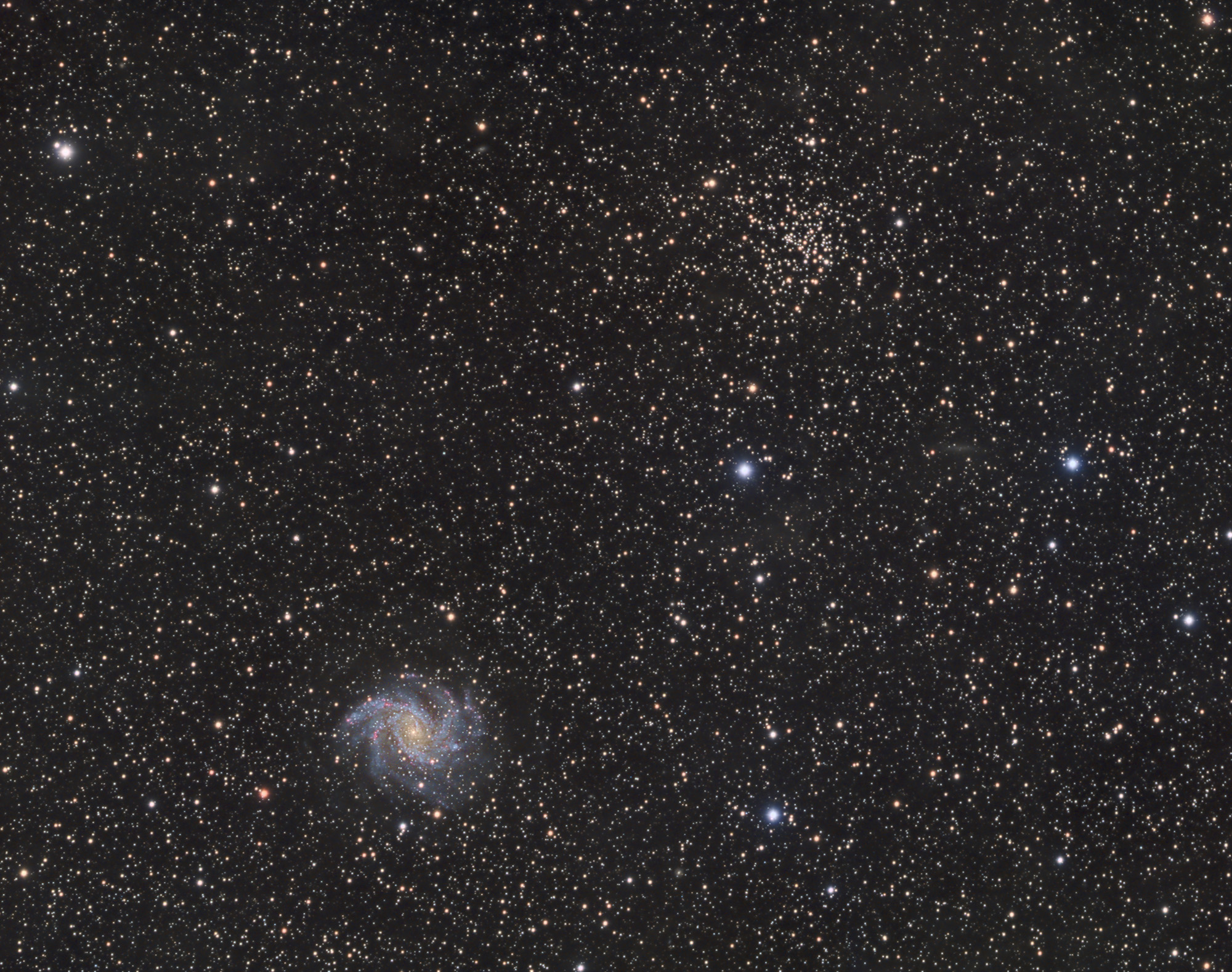Space Image of the Day Gallery (October 2018)
Image of the Day Archives
For older Image of the Day pictures, please visit the Image of the Day archives. Pictured: NGC 2467.
Happy Birthday, NASA!
Monday, October 1, 2018: On this day in 1958, NASA officially opening for business. This aerial view of the Lewis Research Center in Ohio shows the agency's new name spelled out on the roof of the Flight Research Building shortly after the grand opening. Before October 1958, the roof of the building was painted with the acronym "NACA," which stood for the National Advisory Committee for Aeronautics, or NASA's predecessor. — Hanneke Weitering
Sunrise at the Space Station
Tuesday, October 2, 2018: Good morning from the International Space Station! NASA astronaut Ricky Arnold shared this photo of the sunrise as beams of sunlight illuminate Earth's atmosphere on Monday morning (Oct. 1). — Hanneke Weitering
Hidden Hydrogen Glows Between Galaxies
Wednesday, October 3, 2018: Vast clouds of atomic hydrogen glow blue among a myriad of distant galaxies in this image from the European Southern Observatory's Very Large Telescope (VLT) array in northern Chile. Using a supersensitive spectrograph called MUSE, the VLT was able to spot these faint clouds in an otherwise dark and featureless portion of the sky in the Fornax constellation. — Hanneke Weitering
Welcome Home!
Thursday, October 4, 2018: A Soyuz spacecraft carrying three Expedition 56 crewmembers returned to Earth from the International Space Station this morning. NASA astronauts Drew Feustel and Ricky Arnold and Russian cosmonaut Oleg Artemyev touched down on the steppe of Kazakhstan after spending 197 days in space. — Hanneke Weitering
Venus in False Color
Friday, October 5, 2018: The bizarre and hellish atmosphere of Venus wafts around the planet's surface in this false-color image from the Japanese Aerospace Exploration Agency's Akatsuki spacecraft. Citizen scientist Kevin Gill processed the image using infrared and ultraviolet views captured by Akatsuki on Nov. 20, 2016. — Hanneke Weitering
SpaceX's Historic West Coast Landing
Monday, October 8, 2018: A SpaceX Falcon 9 rocket makes history with this landing at Landing Zone 4 of Vandenberg Air Force Station in California on Oct. 7, 2018. It is SpaceX's first-ever West Coast landing of a Falcon 9 rocket. The mission launched the Earth-observation satellite SAOCOM-1A for Argentina's national space agency. - Tariq Malik
Breaking space news, the latest updates on rocket launches, skywatching events and more!
Two Parting Rocket Stages
Tuesday, October 9, 2018: Two stages of a SpaceX Falcon 9 rocket separate inside a glowing plume shortly after lifting off from Vandenberg Air Force Base in California late Sunday night (Oct. 7). After separation, the rocket's second stage continued to haul the SAOCOM-1A satellite into orbit while the first stage returned to Earth for a historic first landing on the U.S. West Coast. Photographer Sheila Hoffos captured this view of the launch from Simi Valley, California, roughly 120 miles (190 kilometers) southeast of Vandenberg. — Hanneke Weitering
A Solar Transit
Wednesday, October 10, 2018: The International Space Station crosses in front of the sun in this composite image by NASA photographer Joel Kowsky. He combined nine frames captured from Suffolk, Virginia on Sunday (Oct. 7). — Hanneke Weitering
Soyuz Rocket Launch Aborted
Thursday, October 11, 2018: A Russian Soyuz rocket that failed to launch two crew members to the International Space Station this morning is pictured shortly after it lifted off from the Baikonur Cosmodrome in Kazakhstan. After one of the rocket boosters failed during the ascent, the launch was aborted, and the crew capsule returned to Earth in a ballistic landing. The passengers, NASA astronaut Nick Hague and Russian cosmonaut Aleksey Ovchinin, are reported to be safe and in good health. — Hanneke Weitering
The 'Fireworks Galaxy'
Friday, October 12, 2018: The spiral galaxy NGC 6946, also known as the "Fireworks Galaxy," glows with vibrant shades of red and blue in this deep-space image by astrophotographer Ron Brecher. That group of stars to its upper right is NGC 6939, an open star cluster located 4,000 light-years away in the constellation Cepheus. While these two objects appear close together from our perspective on Earth, the Fireworks Galaxy is actually much farther away from Earth at a distance of about 22.5 million light-years. — Hanneke Weitering

Space.com is the premier source of space exploration, innovation and astronomy news, chronicling (and celebrating) humanity's ongoing expansion across the final frontier. Originally founded in 1999, Space.com is, and always has been, the passion of writers and editors who are space fans and also trained journalists. Our current news team consists of Editor-in-Chief Tariq Malik; Editor Hanneke Weitering, Senior Space Writer Mike Wall; Senior Writer Meghan Bartels; Senior Writer Chelsea Gohd, Senior Writer Tereza Pultarova and Staff Writer Alexander Cox, focusing on e-commerce. Senior Producer Steve Spaleta oversees our space videos, with Diana Whitcroft as our Social Media Editor.
